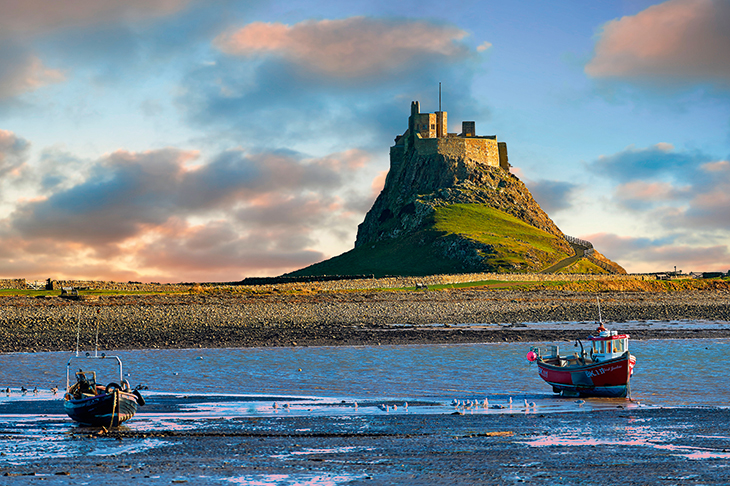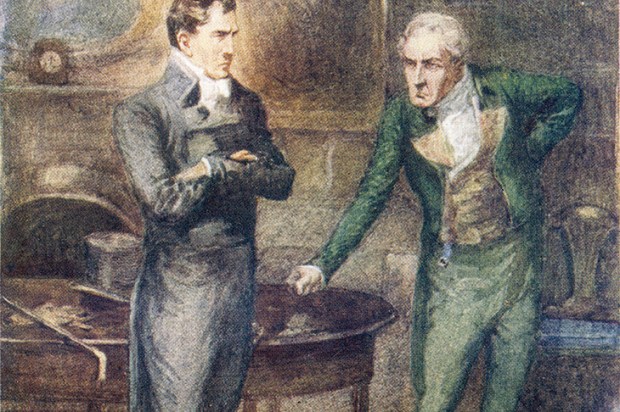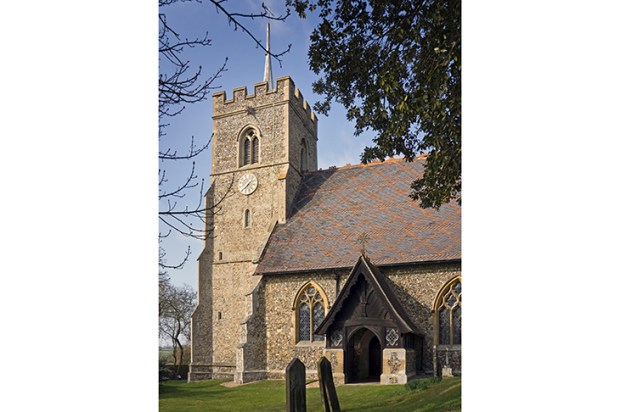There was a time when travel writers would set off with a spring in their step: Coleridge knocking the bristles from a broom in his impatience to make it into a stick; Laurie Lee walking out one midsummer morning; Patrick Leigh Fermor singing as he headed down the lane. To travel was an expression of freedom and exploration; to step out of the front door the beginning of a grand adventure.
Not any more. Travel writers now come troubled and weary before they’ve even begun. A journey can no longer be a jeu d’esprit. It has to be undertaken to expiate some trauma. It is almost as if, in today’s new puritanism, it has to be painful. One thinks of the old nursery rhyme: ‘Wednesday’s child is full of woe, Thursday’s child has far to go.’
Recent bestselling examples of the genre have all followed the same principle: Cheryl Strayed’s Wild: From Lost to Found treated walking as necessary psychotherapy; Guy Stagg’s The Crossway was billed as ‘a journey to recovery’; while The Salt Path by Raynor Winn told of a couple escaping from eviction and illness.
Alistair Moffat has joined this party of burdened pilgrims. Nearly 70, he wants to face up to some ‘actuarial facts’, those he has wronged and mistakes he has made, so he ‘can change what is in my heart and soul’. To shrive himself, he decides to travel to Lindisfarne in the footsteps of Cuthbert, the great 7th-century saint of the north. This is admirable in its ambition, if at times dull in the execution, but suffers from one essential flaw. We know very little about St Cuthbert’s journey to Lindisfarne.
So Moffat has to do a great deal of supposition: what Cuthbert might have thought if he had once stood in the same place;whether he knew where his decision to become a monk might take him. He even admits at one point that Cuthbert probably would not have travelled this particular way, though it did at least give very fine views.
It would take a writer of Sebaldian genius to flesh out such slender pickings, which Moffat is not. The prose can be all too pedestrian. This is the sort of walking book that notices when you pass a car park or a dog barks. And while he tantalises the reader with the promise of past misdeeds, the only one he will confess to is that he gave up rugby when he was 22, despite having shown promise.
He’s at his best as a historian and he has already written widely on ancient Scotland and the Borders. It’s fascinating to learn that Celtic monks followed the Druids in having their foreheads tonsured to give them a high hairline, with a pigtail behind — and that this may have been a fashion that aggravated divisions at the crucial Synod of Whitby between the Celtic and Roman delegates. And that at the only Anglo-Saxon temple to have been excavated in Britain, at Yeavering near the Tweed, a living woman had been thrown on top of the corpse of a nobleman buried there and covered by stones.
On arriving at Lindisfarne, Moffat makes the point that the famous Gospels which the monks produced there so painstakingly would be better seen in situ rather than buried away in the British Library. He draws attention to the skill with which the inks were made, so that the colours have remained largely unfaded 13 centuries later. Because the monks used vellum calf skin, it was easiest to cut larger double pages and then bind them, thereby creating the template for the printed book. The jewelled cover of the Gospels was ripped off by the Vikings in their terrible raid on the island in 793, although they left the manuscript itself, it being presumably of no interest.
By then St Cuthbert himself was long dead, and Moffat comes to some sobering conclusions about both his own impending mortality — his journey has been ‘the first few faltering steps in learning how to die’ — and the likelihood that Cuthbert’s end was a bleak one, in the middle of winter on a lonely, inhospitable island. Moffat is commendably honest in his self-appraisal, and there will be readers who welcome these confessions of a justified travel writer. However, I would be concerned if the trend becomes a requirement.
Some music festivals have lockers in which you can deposit ‘emotional baggage’ at the start of your long weekend, so that you can dance away without inhibitions. It’s not that I’m suggesting all travel writers should do the same; but one would hope that it should still remain possible sometimes to do a journey, well, just for the fun of it.
Got something to add? Join the discussion and comment below.
Get 10 issues for just $10
Subscribe to The Spectator Australia today for the next 10 magazine issues, plus full online access, for just $10.
You might disagree with half of it, but you’ll enjoy reading all of it. Try your first month for free, then just $2 a week for the remainder of your first year.














Comments
Don't miss out
Join the conversation with other Spectator Australia readers. Subscribe to leave a comment.
SUBSCRIBEAlready a subscriber? Log in